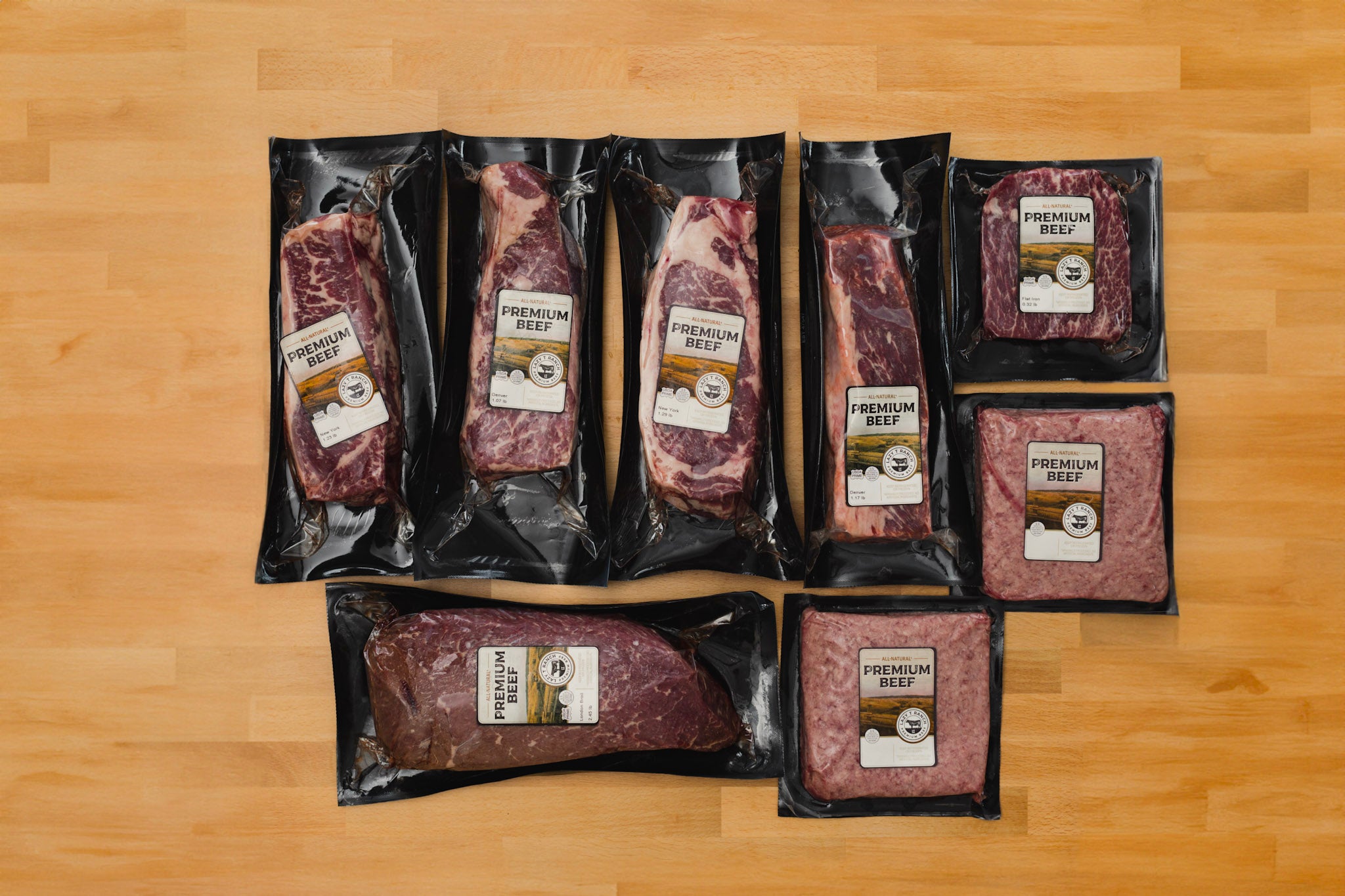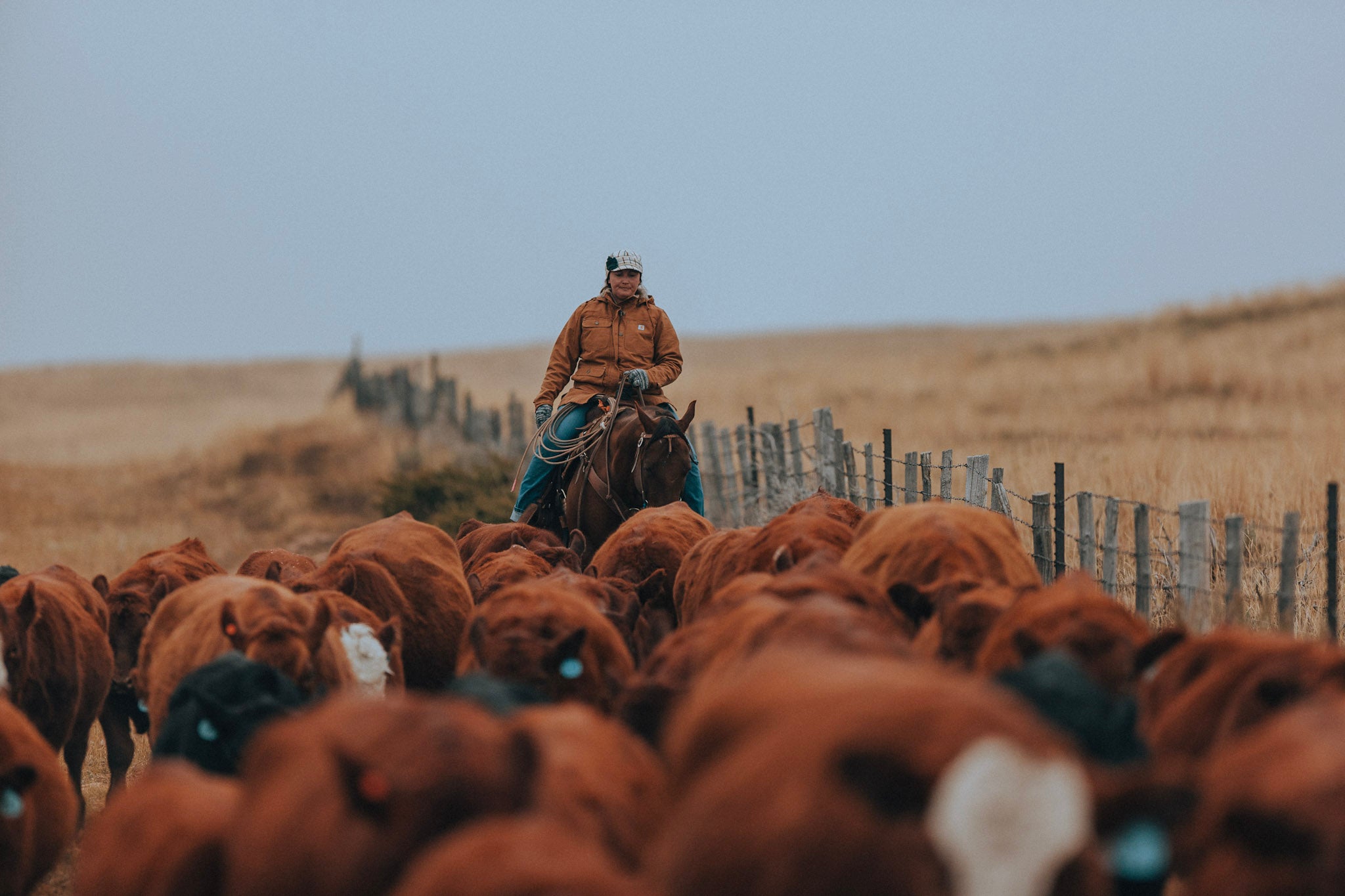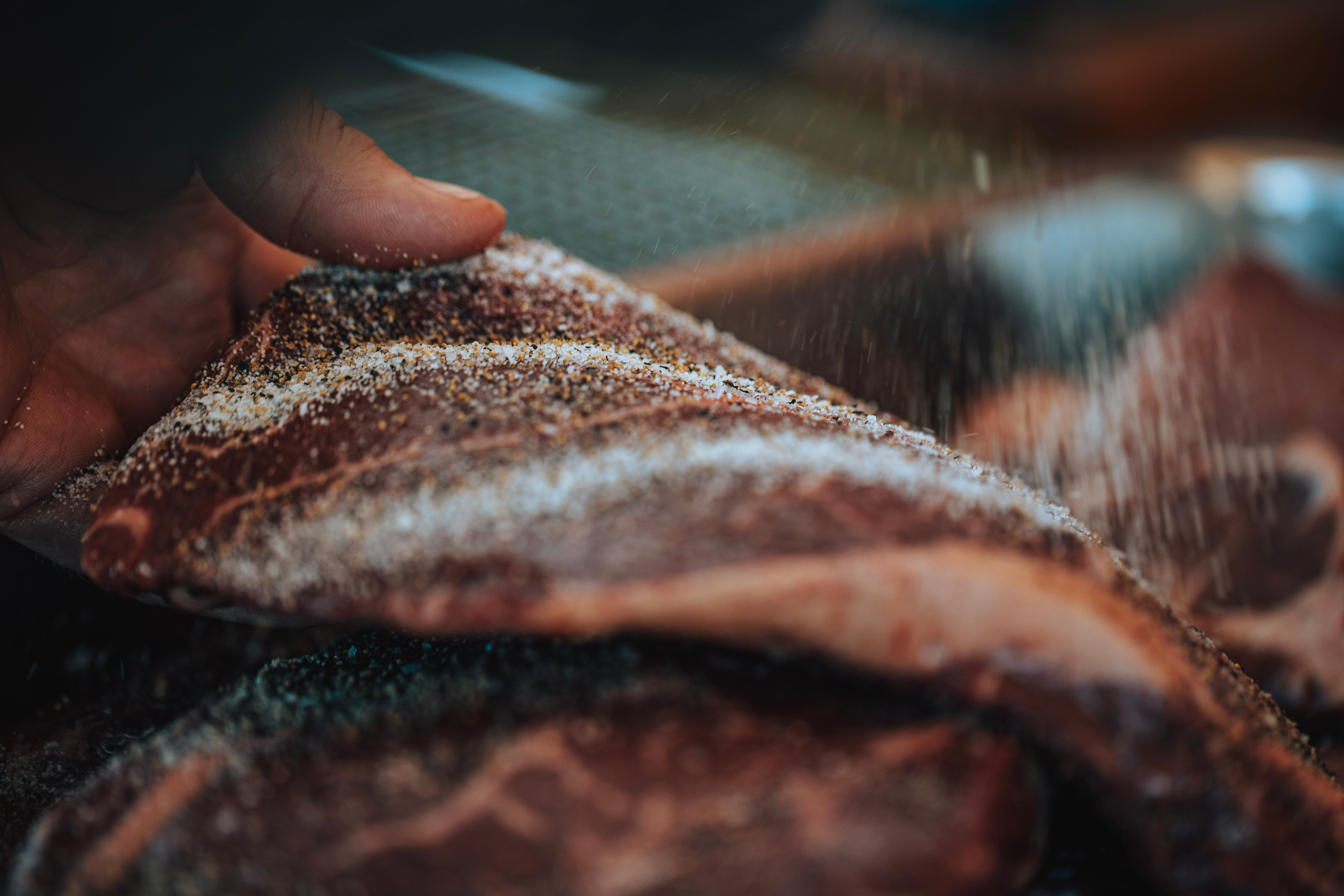
Unlocking the Value of Beef Box Programs & How to Choose One
Nowadays there’s a subscription for everything from beauty products to misfit produce. No matter what you need, you can go online, find a specially curated box, and have it shipped to your front door.
Beef box programs follow a similar format.
What is a beef box program and why has it become so popular recently?
A beef box is a custom selection of raw or cured beef delivered to your house.
More and more people are choosing beef box programs over weekly supermarket runs. Besides the nutritional and financial benefits, beef boxes offer high-quality meat purchased with ease.
Beef box popularity can be accredited to several factors:
- The COVID-19 pandemic sparked a rise in subscription options. People turned to online providers and since then they haven’t looked back.
- Clean eating has become a priority in many households. With beef boxes, a person can know exactly what’s in their meat, where it came from, and how it was processed.
- Grocery stores have limited stock. Beef boxes offer butcher-level variety at a great cost. Who wouldn’t want to bring the steakhouse to their backyard grill?
What are the primary benefits of subscribing to a beef box program?
Let’s face it. Grocery store meat is often suspicious at best. Beef box programs give you the power. No more wondering if your hamburger was dyed or where it was sourced. With a beef box program, you can learn everything about your meat.
Beef box benefits include:
- Convenience. A box of high-quality beef shows up at your house. What’s easier than that?
- Nutrition. Red meat is a terrific source of protein, minerals, and vitamins, especially vitamins B12, iron, and zinc. With only 3.5oz of beef, you get 41.6% DV of zinc and 41.5% DV of Vitamin B12. Is beef a superfood? We sure think so!
- Quality. Although beef is nutrient dense, the quality of the meat plays a significant role in its nutritional value. Beef boxes send you high-quality cuts, most of which you won’t find at your grocery store.
- Supporting US ranchers. Many beef box programs source their meat from American ranches and cattle farms. By purchasing beef boxes, you support US agriculture. From the pasture to the butcher to your table—that’s how we like it.
- Competitive prices. Not only do beef boxes offer a range of high-quality cuts, but they do so at a competitive price. For example, you can buy the cheapest Filet Mignon at your supermarket for $20/lb. If you purchase a beef box, you can get a higher grade, ethically sourced, all-around-better version of the cut for around $18/lb.
- More options. Beef box programs offer unmatched variety! Whether you’re craving a Ribeye, New York, or Delmonico, beef boxes have you covered.
- Ethical sourcing. Beef boxes provide transparency, highlighting where the beef came from and how it was raised and processed. You can feel good knowing your beef was sourced responsibly, without a negative impact on the environment.
- Grading. When it comes to beef grading, there are three categories: Prime, Choice, and Select. The United States Department of Agriculture (USDA) considers the beef’s marbling, otherwise known as fat, and factors that impact flavor and juiciness to determine the beef’s grade. What’s important to note here is the value of USDA graded beef. Some grocery stores and companies grade meat themselves; some sell non-graded meat. Without a USDA grade, it’s difficult to know the quality of the meat and its value. Most beef box programs tell you the exact USDA grade.
How does a beef box program improve nutrition and understanding of food sourcing?
At some point, we’ve all visited our grocery store’s meat department and purchased beef packaged in Styrofoam and plastic wrap. Harmless, right?
Hold on to your hat. The following information may shock you.
Grocery store meat departments are breeding grounds for dangerous bacteria. The machinery, a deli slicer for example, isn’t always disinfected. And plastic-wrapped meats often contain pathogens like salmonella and E. coli, both easily transferred because of the flimsy packaging. Not only that, but expiration dates can’t be trusted. Most states don’t regulate labeling.
Here’s the real kicker: Many grocery stores will exchange the expiration date for a new label if the product still looks sellable. Fresh store-bought meat? What’s that?
Other disturbing facts . . .
- In 2016, laws regarding Country of Origin Labeling were appealed. Now producers and retailers aren’t required to specify in which country the animal was raised, butchered, and processed.
- Packaged ground beef sold in stores can be made from the meat of hundreds, sometimes thousands, of cows.
- According to a 2011 study, nearly 50% of raw meat sold in stores contains staph infection bacteria, including potentially lethal MRSA.
- Specific cuts of store-bought meat are mechanically tenderized, which exposes the meat to bacteria.
- Raw meat sold in stores is often treated with carbon monoxide to give it a red color. (Red doesn’t indicate freshness.)
- Most store-bought meat is treated with antibiotics to strengthen factory-farmed animals’ immune systems. When you eat it, you’re taking a bite of antibiotics too.
Beef box programs are a healthier alternative to grocery store meat. Not only do they give you more information about the beef, but they can guarantee freshness and sterile packaging.
Most beef box programs source their beef from American-owned farms and ranches. No more suspicious “hundred cows” ground beef. Also, many beef box programs highlight whether their beef is all-natural, pasture-raised, hormone-free, and so on.
You don’t have to eat mystery meat. Beef box programs offer a solution, providing quality beef with transparency. Now you can know everything about what’s sizzling on your grill.
What do consumers need to be aware of when it comes to mystery boxes in beef box programs?
Surprises are fun but not when it comes to your beef.
Nowadays mystery boxes are all the rage. People love the thrill of unboxing the unknown whether cosmetics or luxury brands. With food, especially meat, you’re better off avoiding surprises.
Beef box programs often provide quality cuts of beef at competitive prices. However, mystery beef boxes sometime include cheaper, lower grade cuts and non-beef fillers such as pork and chicken. To get the most value, choose a beef box with a listed inventory so you can gauge the box’s worth.
Why is transparency so crucial when it comes to the weight and contents of a beef box?
One word. Value. Knowing the weight and contents will help you decide which beef box program is the “best bang for your buck.”
For example, let’s say you purchase a beef box of an unspecified weight for around $200. You receive the box and learn it contains 10lbs of mostly ground beef, low-cost steaks, and fillers. The box’s true value doesn’t come close to $200. Now if you pay $200 for 10lbs of Filet Mignon, Ribeye, and New York, then you can say you’ve gotten a deal.
What's the difference between USDA graded and non-graded beef boxes?
USDA grading sets a standard and expectation. If a beef box isn’t graded, it’s nearly impossible for you to know the beef’s quality and marbling prior to purchase.
How does the grading of beef affect the quality and taste of the meat in a beef box?
The USDA has three grades of beef:
- Prime. If the USDA grades beef as Prime, you can expect a restaurant-worthy cut that’s juicy and has generous marbling.
- Choice. With less marbling than Prime, Choice Beef isn’t as juicy but is still high-quality, tasty, and tender.
- Select. The leanest cut, Select Beef has the least marbling which means it isn’t as juicy or tender and can lack flavor. This cut is best for marinating.
Understanding the USDA grades will allow you to choose a beef box program that suits your tastes.
Are there beef box programs that include fillers like pork and chicken, and why should consumers be aware of this?
In short, yes, there are many beef box programs that include fillers such as bacon and chicken tenders. Is this a bad thing? Not necessarily, but it’s important to keep in mind when shopping for a beef box. Fillers are cheaper to produce, so if you purchase a beef box with non-beef items, you may not get your money’s worth.
How can consumers ensure they are getting the best value from their beef box program?
When choosing a beef box program, consider the following:
- What is included within the beef box?
- Is the beef box USDA graded? If so, which grade?
- How much does the beef box weigh? What is the cost per lb.?
- From where was the beef sourced? How was it raised?
- Does the beef box align with your values and needs—i.e., is the beef all-natural, hormone-free, pasture-fed?
Using these questions as a checklist will ensure you get the best value from a beef box program. If you're in the market for a beef box delivery service, we've got you covered. We have 21-day dry aged premium beef boxes guaranteed to make your neighbors jealous. Browse our beef boxes:


